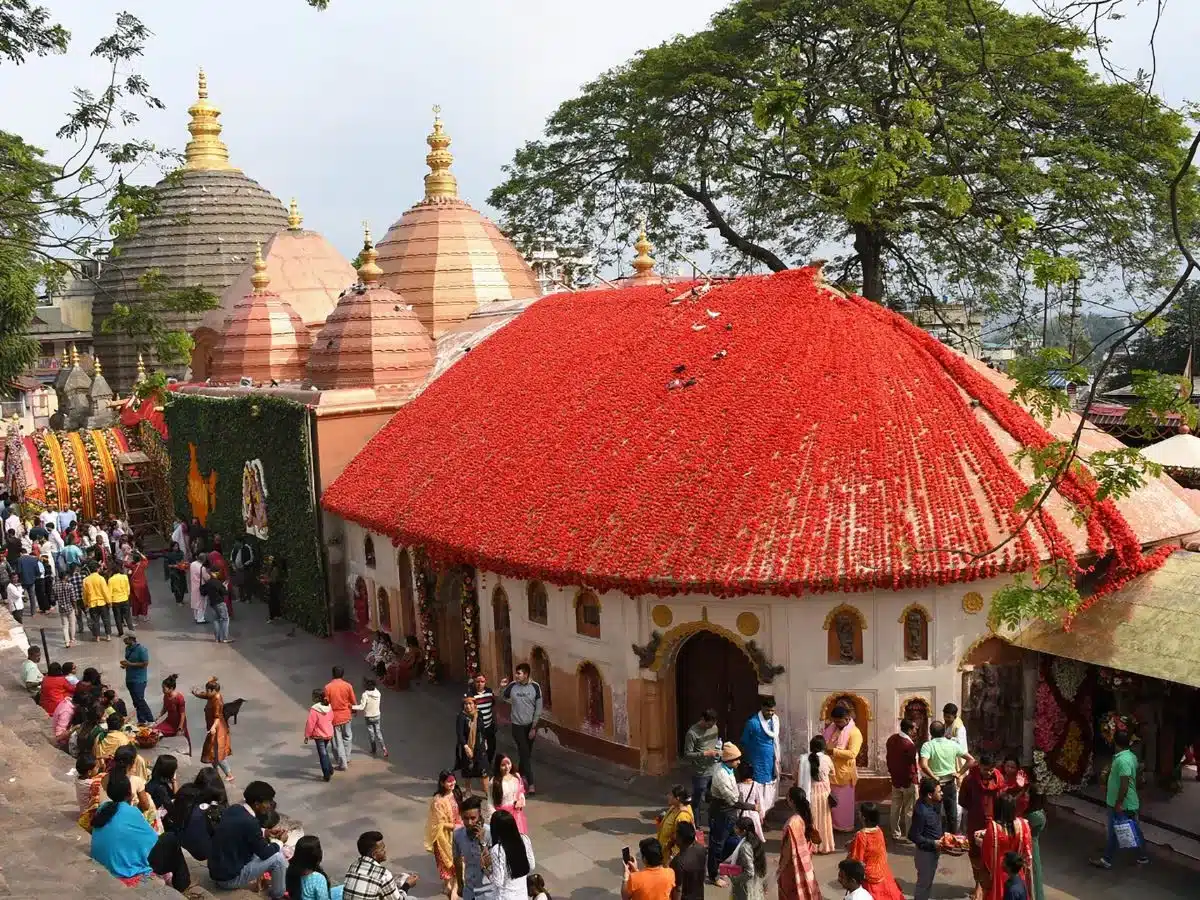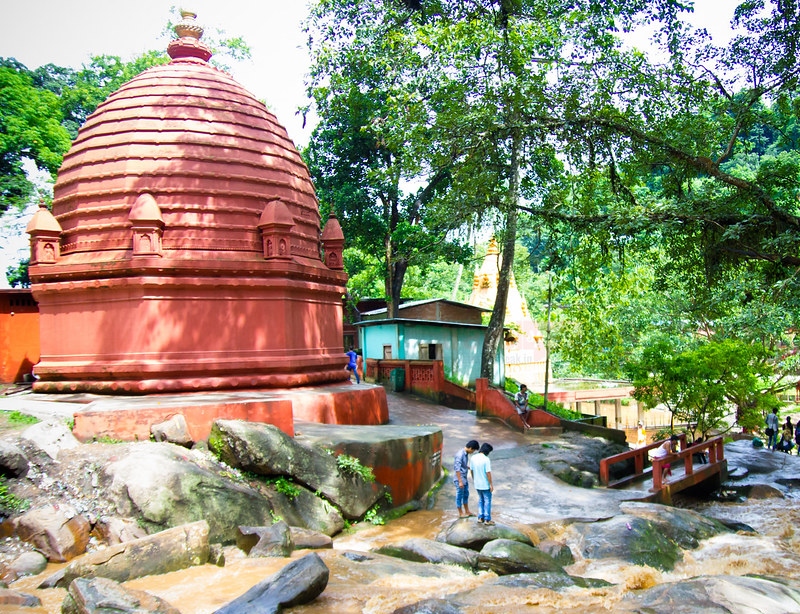About us
Embark on an enchanting journey through the verdant landscapes and rich cultural tapestry of Assam with "Explore Assam" – your gateway to the heart of Northeast India. Our meticulously curated tours are designed to cater to every traveler's dream, offering an array of services that promise an unforgettable experience. Know More
Archives
PACKAGE ENQUIRY
Assam History
Assam is the eastern most sentinel of India endowed with enchanting and picturesque natural beauty. The State is adorned with beautiful lush covers of greenery, a chain of hills and rivers mainly the Brahmaputra and the Barak. It has been the living place of various races, tribes and ethnic groups since time immemorial. The dynamics of synthesis and assimilation of the races make Assam glorified and rich.
There are several opinions to the origin of the name “Assam”. In the ancient Sanskrit literature both the names ‘Pragjyotisha’ and ‘Kamrupa’ were used as designation for ancient Assam. Its antiquity can be established from the fact that it has been mentioned in the two great epics- The Mahabharata and the Ramayana and also in the Puranas. Regarding the name ‘Prajyotisha’ or ‘Pragjyotishpura’, Gait (1992, reprint) writes that Prag means ‘former’ or ‘eastern’ and Jyotisha ‘a star’, astrology, shining. Pragjyotishpur may, therefore, be taken to mean the ‘City of Eastern Astrology’.
References of Kamarupa are found in literature as well as in many epigraphs. The mythology regarding the origin of the name Kamarupa tells us the story of Sati who died due to the discourtesy shown to her husband by her father Daksha. Overcame by grief, Shiva carried her dead body and wandered throughout the world. In order to put a stop to this, Vishnu used his discus to cut the body into pieces, which then fell into different places. One such piece fell down on Nilachal hills near Gauhati and the place was henceforth held sacred as Kamakhya. But Shiva’s penance did not stop, so the Gods sent Kamdev, the cupid to break his penance by making him fall in love. Kamdev succeeded in his mission, but Siva enraged at this result, burnt Kamdev to ashes. Kamdev eventually regained his original form here and from then onward the country came to be known as Kamarupa (Where Kama regained his Rupa or form).
The name ‘Aham’ or ‘Asom’ was probably given by the Ahoms who came to Assam in 1228 A.D. Even though the origin is ambiguous but it is believed that the modern name Assam is itself an anglicization.
The Ahom’s entered Assam fully assimilated and ruled Assam for nearly six hundred years. The period of Ahom rule is a glorious chapter in the history of Assam. The Ahom dynasty was established by Sukaphaa, a Shan prince of Mong Mao who came to Assam after crossing the Patkai Mountains. It is between 13th and 19th century that several tribal communities also came into the historical forefront of Assam. Kacharis, Chutias and Koch were the prominent tribal groups that were found in the medieval times of Assam. The rule of this dynasty ended with the Burmese invasion of Assam and the subsequent annexation by the British East India Company following the Treaty of Yandaboo in 1826. The British emperor took charge of the state and thus begun the colonial era of Assam.
Assam lost much of its territory to new states that emerged from within its borders. The British annexed Cachar in 1832 and Jaintia Hills in 1835. In 1874, Assam became a separate province with Shillong as its capital. Sylhet was merged with East Bengal on partition of India. With the partition and independence of India in 1947, the district of Sylhet (excluding the Karimganj subdivision) was ceded to Pakistan (the eastern portion of which later became Bangladesh).
However, like all other states of India, Assam was also involved in various freedom movements. With the enthusiastic participation of many courageous activists Assam, Assam became a constituent state of India in 1950. It saw further reduction of its area when Dewangiri in North Kamrupa was ceded to Bhutan in 1951. The capital of Assam was formerly Shillong (now the capital of Meghalaya), and later shifted to Dispur, a suburb of Guwahati, in 1972. The States of Meghalaya, Nagaland, Arunachal Pradesh and Mizoram got their own separate states.
The history of Assam has passed several stages of development to reach to its present state. The history of Assam can be divided into four eras. The ancient era began in the 4th century with the mention of Kamarupa in Samudragupta's inscriptions on the Allahabad pillar and the establishment of the Kamarupa kingdom. The medieval era began with the attacks from the Bengal Sultanate, the first of which took place in 1206 by Bakhtiyar Khilji as mentioned in the Kanai-boroxiboa rock inscription, after the breakup of the ancient kingdom and the sprouting of medieval kingdoms and chieftain-ships in its place. The colonial era began with the establishment of British control after the Treaty of Yandaboo in 1826, and the post-colonial era began in 1947 after the Independence of India.
The first Governor of independent Assam was Sir Muhammad Saleh Akbar Hydari and Chief Minister was Gopinath Bordoloi who witnessed the foundations laid of Gauhati University (1948), Gauhati High Court (1948) and Guwahati station of All India Radio (AIR). When Gopinath Bordoloi passed away in 1950, Bishnu Ram Medhi took over as the next Chief Minister of Assam. During his tenure from 1950 to 1957, the First Five-Year Plan was started, Panchayat system of governance was introduced and the agricultural sector got more importance.
Bimla Prasad Chaliha was the third chief minister from 1957 to 1970. In 1958th the 66th session of Congress was held at Jalukbari, Guwahati. The Saraighat Bridge was constructed over the Brahmaputra river (1965), an Oil refinery was established at Noonmati, Guwahati in 1962 during his time. In 1959-60 the famous language revolt took place in Assam, and as a result Assamese became the official language of the State and Bengali also enjoyed the same status in the Cachar District of Barak Valley.
Mohendra Mohan Choudhury assumed the mantle of chief minister in 1970. The foundation of Bongaigaon Petro-Chemicals, Paper Mill at Jogighopa and Jute factory at Silghat in Nagaon were laid in his tenure. In 1972 Sarat Chandra Sinha came to power after Congress secured absolute majority. In 1974 the capital was finally shifted to Dispur in Guwahati.
The Assam Movement (1979-1985) was a popular movement against illegal immigrants in Assam. The movement, led by All Assam Students Union (AASU) and the All Assam Gana Sangram Parishad (AAGSP), developed a program of protests and demonstration to compel the Indian government to identify and expel illegal, (mostly Bangladeshisi), immigrants and protect and provide constitutional, legislative and administrative safeguards to the indigenous Assamese people. The agitation programs were largely non-violent, but the Nellie massacre was a case of extreme violence. The agitation program ended in August 1985 following the Assam Accord, which was signed by leaders of AASU-AAGSP and the Government of India.
The Assam Accord (1985) was a Memorandum of Settlement (MoS) signed between representatives of the Government of India and the leaders of the Assam Movement in New Delhi on 15 August 1985. A six-year agitation demanding identification and deportation of illegal immigrants was launched by the All Assam Students’ Union (AASU) in 1979. It culminated with the signing of the Assam Accord.
Today Assam has an area of 78,438 square kilometers. It consists of thirty three districts and is credited to be the most populous state in the entire Northeast India.
Detail View About Assam on Assam State Portal
Data Reference fron Assam State Portal :- https://assam.gov.in/about-us/394
National Parks Tour Packages
MAY I HELP YOU?
🙏
"Welcome! How can I assist you? Whether you have questions, need directions, or require any other help, I'm here to ensure your visit is smooth and enjoyable."
"Feel free to ask for help at any time."
Search On Our Website
You will get results for Blog Posts, Tour Information, Travel Packages & Booking Information etc.

"Explore Assam’s tea garden and wildlife tour was delightful. The mix of tranquility in the estates and excitement of spotting wildlife was perfectly balanced. Truly a well-crafted experience!"
- Deepak T., Gurgaon
"Our Guwahati city tour package was seamless and exciting. Explore Assam made sure we didn’t miss a single highlight, from temples to nightlife. Amazing service and incredible memories!"
- Kabir N., Ahmedabad
"The rafting adventure on the Brahmaputra organized by Explore Assam was thrilling! Everything was well-coordinated, and safety was prioritized throughout. Perfect for adventure seekers looking for an adrenaline rush!"
- Reema G., Jaipur
"We had a fantastic family trip to Majuli and Sivasagar. Explore Assam’s team was professional, and the cultural experiences they organized were enriching. Our kids loved the adventure too!"
- Ananya B., Pune
Select Package
Sign in
Payment

Get Explore Assam
Ready to embark your journey with us!
Let's turn your vision into reality. Contact us today to set your budget with us.
Profile creation is not available to public users. Soon we will update these feature. Keep Visiting !
Click to Start Conversation.
50,000+ people trusted traveling partner choice.
Plan Your Admirable Journey Through Us! "Tour, Travel & Stay"


















